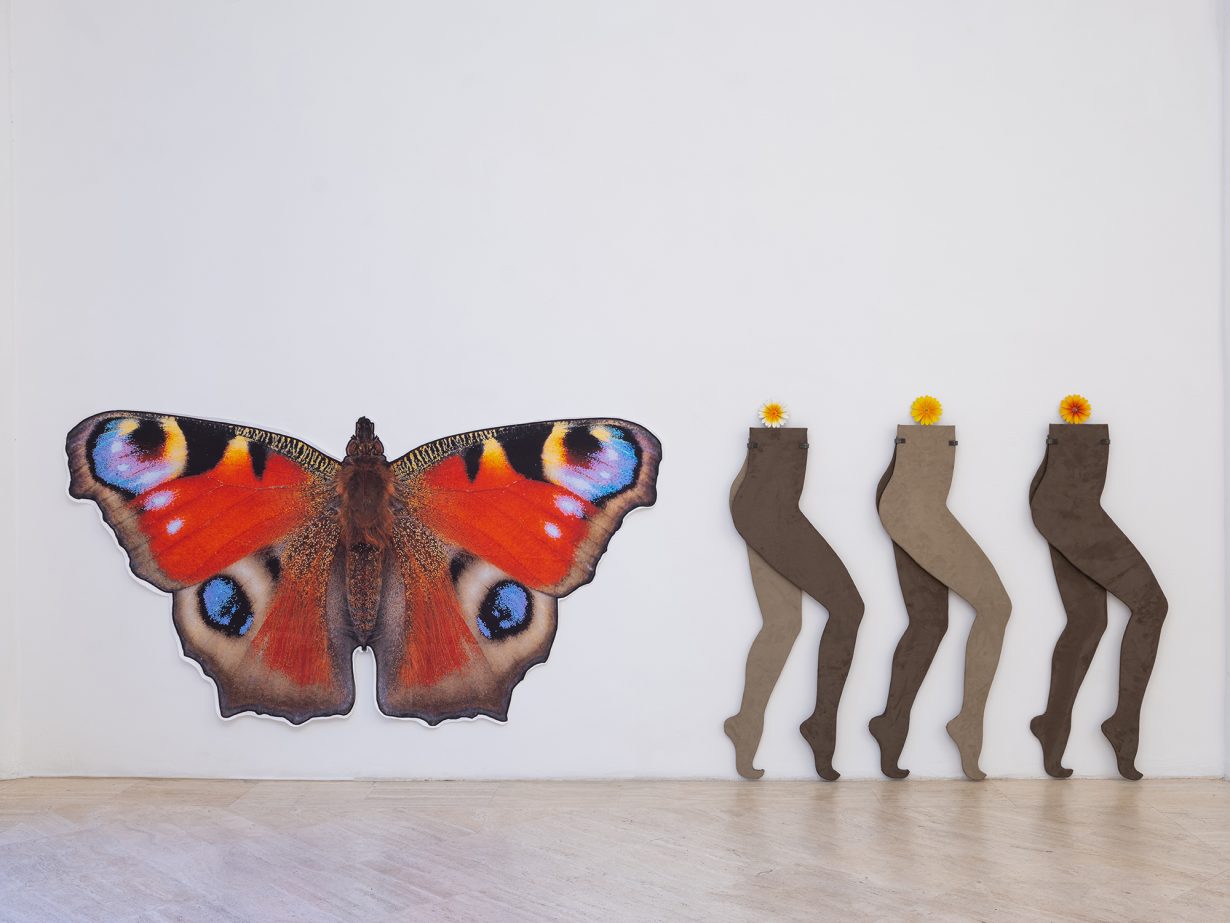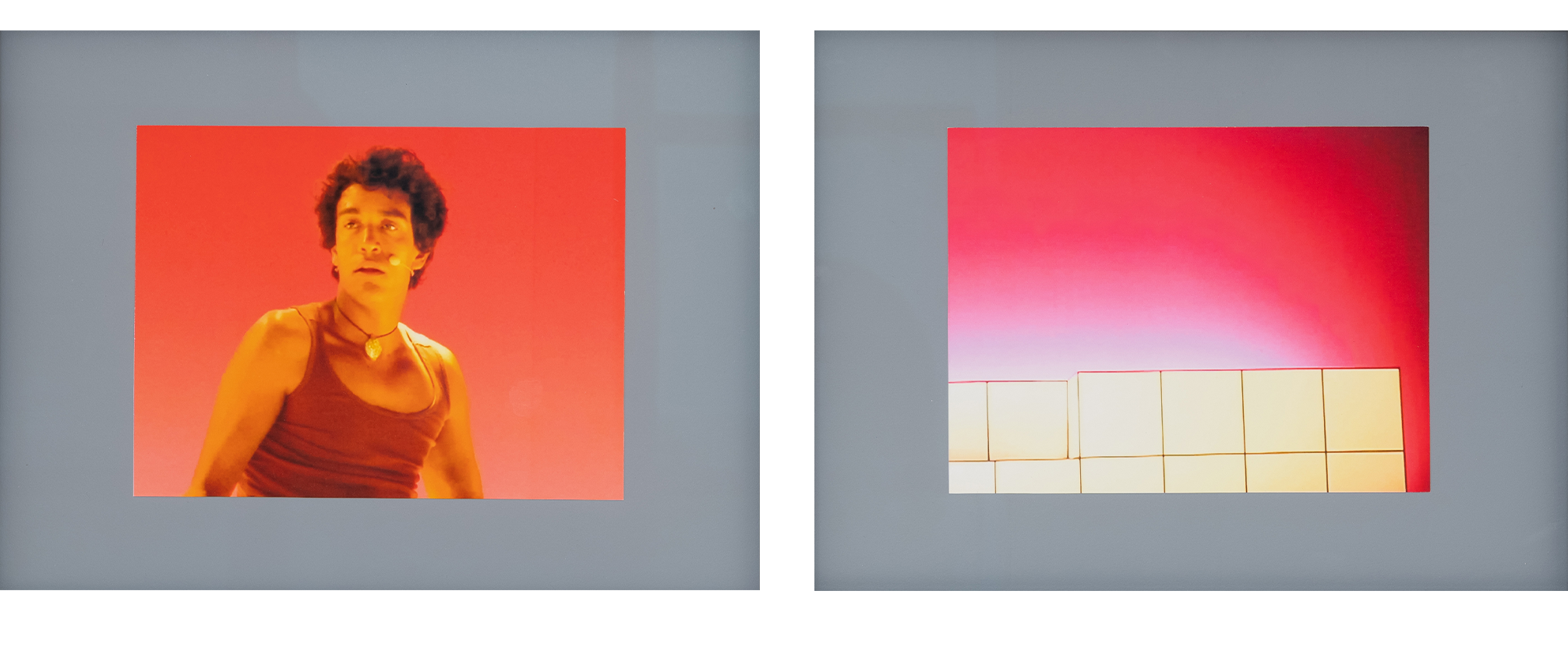Last year, the artist staged an adaptation of Othello. Now she returns to the Venetian general with Soft You, expanding on the play’s ideas of identity, perception and fear
Anthea Hamilton’s working method and aesthetic language could both be encapsulated by the early-2000s term ‘mashup’. The British artist’s approach prioritises cross-cultural interests and references from popular culture, fashion, architecture and design, and interdisciplinary modes of production and techniques. Soft You takes its title from the opening lines of the final monologue in Shakespeare’s Othello (c. 1603): ‘Soft you, a word or two before you go,’ spoken by the Venetian Moorish general before he stabs himself, guilt-ridden and despairing after killing his wife, Desdemona, who Othello’s manipulative ensign Iago convinced him was unfaithful. In Hamilton’s evolving creative process, a mere interjection in Shakespeare’s text becomes an open, layered reflection on identity’s complexities and how it is constructed, perceived, feared.
The show, comprising 29 works from 2022 to 2025, reinterprets some key elements of Hamilton’s practice – race, gender roles, sexuality, domesticity – and follows on from Othello: A Play (2024), her first stage performance, which premiered last year in Antwerp. On the walls of the first two rooms are 18 grainy, framed collaged stills from Othello: A Play: images of performers touching their faces and bodies, and interacting with objects and props. The artist apparently intended these scenes to appear as if time had been suspended, and that’s what Othello’s words suggest: a final suspension that invites us, in Hamilton’s vision, to wait and to reconsider the symbolic and narrative dimensions of his story, and its potential resonances in the present.

These works converse in turn with Shibari Chefs (n.d.): black fibreglass mannequins standing and sitting close to the courtyard doors, guardianlike but bound by jute ropes, a material used in Japanese shibari bondage. Similarly trussed is Shibari Desk (2025), a black lacquered writing table decorated with Rankaku, a Japanese mosaic technique using quail eggshells. Bound black dummies, a table resembling a caged body: these hybrid works bind together issues of domesticity and race, and extend into the sphere of desire (rope as S&M practice) and constraint – a tension found, too, in Othello’s drama. Any distinction between sculpture, furniture and bodies feels tenuous. The Leg Chair (Rankaku) (2025), supported by a wooden pillar similarly mosaiced, consists of a pair of spread-wide plexiglass limbs on tiptoes and forms an erotically suggestive chair, recalling earlier Hamilton motifs such as cutout legs modelled on her own body. In the installation Calzedonia (Hot Legs) (2025) – an ironic reference to the Italian hosiery brand of the same name – leg silhouettes serve as architectural and ornamental elements. Coated in velvet and denim, they’re arranged on the final room’s wall like a frieze. Here, the leitmotif of legs evolves into a language of its own, hovering between decoration and sculpture.
Hamilton, then, here orchestrates a show whose parts come together glancingly, through surreal juxtapositions and an intentionally unstable structure, acting as a director within a multilayered framework situated at the intersection of multiple narratives, traditions and visual patterns. The two-metre-high Transposed Lime Waves (2025) is a Panama-cotton butterfly, its digitally printed body decorated with small, pixellike stainless-steel squares that converse with the shining, perforated surface of the nearby sculpture Metal Screen (2025), which reflects the whole surroundings. Meanwhile, lit incense sticks attached to hazel branches, scattered across the exhibition space, carry a fragrance through the show. Developed in collaboration with scent designer Ezra-Lloyd Jackson, it was conceived specifically for Black skin – a reminder that, for centuries, the character of Othello was played by actors in blackface.
Soft You at Fondazione Memmo, Rome, through 2 November
From the September 2025 issue of ArtReview – get your copy
Read next: “I don’t think in a sequential way – I want everything to happen at once”, Anthea Hamilton told ArtReview
